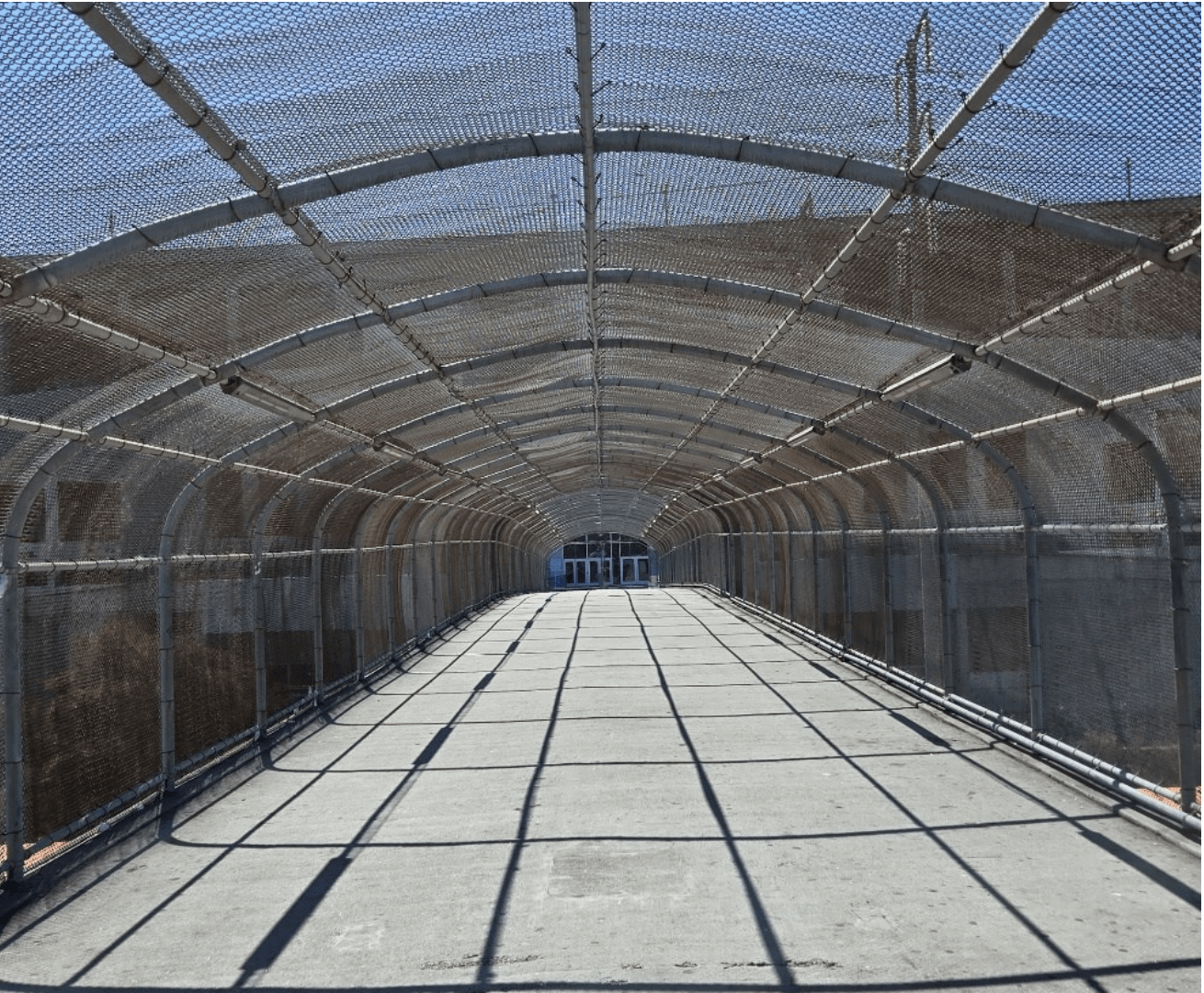The following article first appeared in a zine written by Justin Bai. For more of Justin's work, follow him at Twitter/X : x.com/marxling
On 26 September 2024, the Oakland Coliseum saw its last game with the Oakland Athletics. This marks an end of a 56-year chapter of the Athletics calling the Coliseum home. But it also means an end to a 51-year chapter for the Coliseum BART Pedestrian Bridge.
Playing in the American League, the Athletics moved to Oakland in 1968 (previously playing in Kansas City before and Philadelphia before that). They moved to the newly built Coliseum, which they shared with the Oakland Raiders. In 2016, John Fisher took majority ownership of the team. He subsequently announced plans to move the team to Las Vegas, which was an insult to injury for Oakland sports fans since the Raiders moved to Las Vegas in 2020.
Many fans have protested, participating in “reverse boycotts” of A’s games, while wearing shirts that say, “SELL”—that is, a demand for Fisher to sell the team to an owner who has interests in keeping the team in Oakland.

So what is this place that A’s fans call home? The Oakland Coliseum is widely considered one of the worst MLB stadiums in the country.
A part of it is due to its original dual-purpose design as both a baseball and football stadium. This design led to a large foul territory, giving fans a less intimate, more cavernous atmosphere. Another is its appearance. A 2017 New York Times piece stated, “unlike Wrigley Field or Fenway Park, [the Coliseum] isn’t worthy of preservation. It’s a bland, charmless concrete monstrosity, the last of the unfortunate wave of multipurpose stadiums built in the 1960s.” As a fan of Brutalism and raw concrete, I personally have to disagree. And I’m not the only one.

In a later essay in The New York Times, Jack Nicas wrote in favor of the Coliseum—referring to it as a “Brutalist gem”—and famously argued that if “Fenway Park and Wrigley Field are the historic pubs, the Coliseum is baseball’s last dive bar.”
It seems only appropriate, then, that to access the Coliseum, one takes a utilitarian, concrete bridge: the BART Pedestrian Bridge. According to the San Francisco Chronicle's culture critic Peter Hartlaub, this bridge was built in 1973 (a year after the neighboring Coliseum BART station opened) mostly as an afterthought by officials who realized that there was “a literal moat between the futuristic new BART station and the Oakland Coliseum complex.”


The bridge is approximately 800 feet long, and aside from its concrete, it features chain-linked fencing. Beneath the bridge are train tracks and industrial land, used for what appears to be a roofing supply store and a towing company. While the Bay Area has several famed bridges, the Coliseum BART Pedestrian Bridge is not one of them. And yet, it gets the job done. On the far east end of the bridge is the BART station. A little farther west are stairs that connect to the bus stops on San Leandro Street. Farther west is a ramp that connects to the Capitol Corridor platform, an Amtrak station that was built in 2005.

This Amtrak ramp is a silly one. From the Amtrak station, this ramp is the only practical way to access the Coliseum. There are no stairs or elevator. But the ramp switches back six times in order to access the bridge. I have fond memories of running down the ramp after an A’s game, feeling like a ball rolling through a maze as I navigate the turns to escape.
The ramp is also decorated with public art. According to a press release from the Amtrak station’s opening, “A public art installation entitled ‘Bottom of the Ninth’ enlivens the ramp that connects the platform with the pedestrian bridge.
The artwork, created by Horace Washington, is comprised of 13 different sculptural figures playing baseball.”



It’s not lost on me that transit and bridges are about connecting people, and the Coliseum BART Pedestrian Bridge connects people to Amtrak, AC Transit buses, and BART. (In fact, thanks to this bridge, the Oakland Coliseum is the most Amtrakable MLB stadium in the country—at least, until the A’s move.)
But the bridge offers connections in a more human sense as well. If you’ve ever walked the bridge before an A’s game, you know the shared excitement as you approach the stadium.
The bridge’s narrow walkway makes you feel like you’re in a parade. There are vendors on the bridge before games who sell A’s merch, hotdogs, and alcohol. The rules of the Coliseum (i.e., no cans or glass bottles allowed inside) and the physical space of the bridge also provides for an unofficial Oakland tradition: chugging an entire beer while walking on the bridge before you make it through the security gates.

It's also not lost on me that, at its heart, baseball is a game about coming back home. While it seems that the A’s will be leaving Oakland for good, many A’s fans, myself included, hope to see another day that we can take that pedestrian bridge back home.







